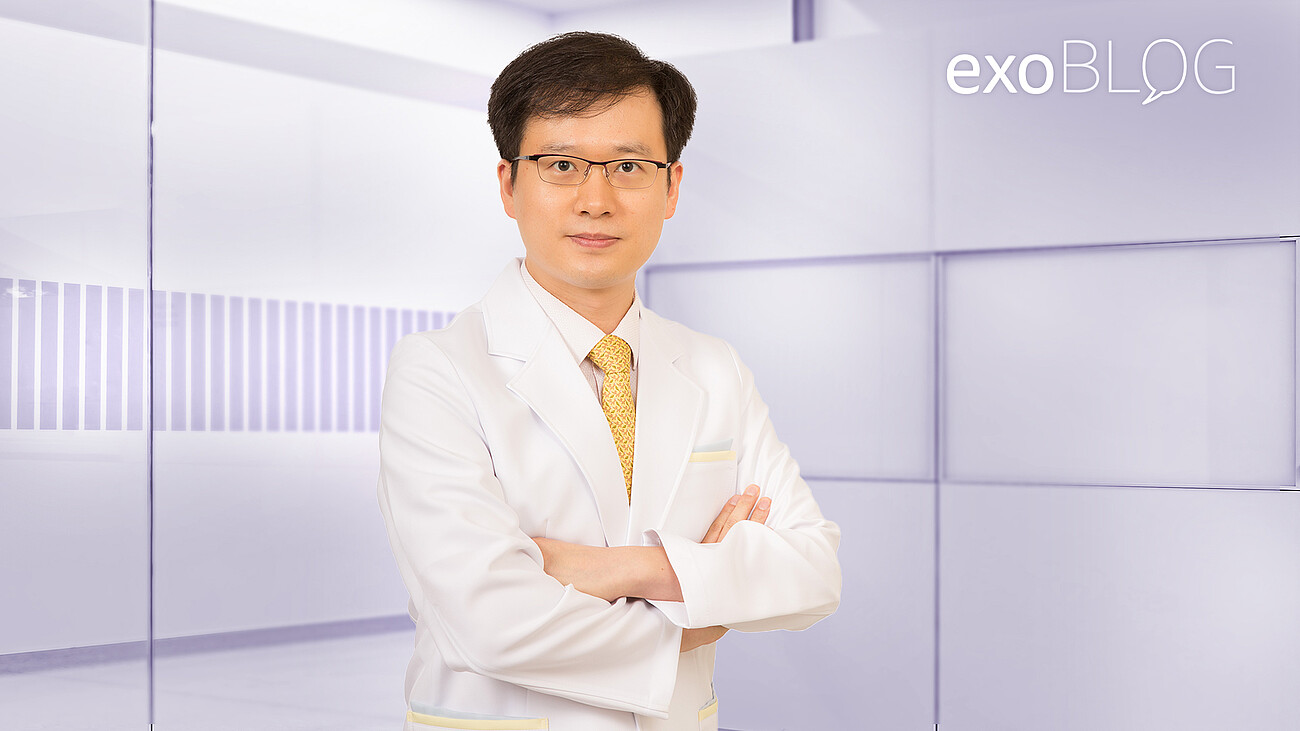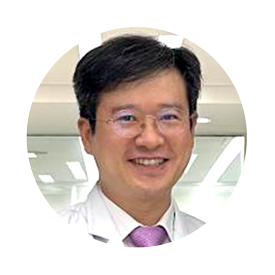Pioneering prosthodontics in Korea
Known as a digital dentistry evangelist in Korea, Prof. Ji-Man Park is a passionate advocate of utilizing exocad software with the latest technology to achieve cutting-edge results. Ji-Man teaches, researches and practices prosthodontics at Korea’s top universities and closely follows the current developments happening in Korea’s dental community. He joins exoBlog to talk about his favorite exocad software tools and where he sees the future of dentistry heading in Korea and beyond.
Q: What are the typical cases for you and what type of technology do you use most often?
A: I often handle complex cases that require precise diagnosis and treatment. I use many electronic devices such as intraoral scanners, facial scanners, and jaw motion tracking devices. These devices help me acquire multi-modal data. I combine the data to create a virtual patient with exocad software. In this way, I can diagnose the patient's current status.
“I really like using the DICOM Viewer module. This module is incredibly powerful for planning implants and preparing a provisional restoration at the same time.”
Q: Which exocad software do you use?
A: I use exoplan and DentalCAD. I really like using the DICOM Viewer module. This module is incredibly powerful for planning implants and preparing a provisional restoration at the same time.
Q: Do you have any favorite tools or features in exocad software?
A: I like the integration of the Zebris device that tracks the mandibular movement to obtain the patient's ideal jaw location. I can get the patient's ideal vertical and horizontal positions. I also really like the copy-and-paste functions. With the Virtual Articulator, I can design the patient's ideal restoration and apply provisionals to the patient's mouth. Then I ask the patient to try out the new restoration. After the trial period, I improve the shape by adjusting the provisional. Then I scan the patient's mouth and align the abutment tooth model and provisional model, and I copy and paste the design into the model for the next version of the provisional. I think the biggest advantage of a digital workflow is being able to copy the design. By doing that, I fully utilize the digital workflow.
Q: How have digital workflows changed your experience as a prosthodontist?
A: On the one hand, you design and manufacture provisionals and then the final restoration by copying and pasting the design. That is a very important workflow. Most dentists and dental technicians are concerned about this, but I think another digital workflow is equally important—the one that impacts the patient’s experience. Digital workflows greatly help with both treatment planning and case acceptance.
Q: How does your current research involve exocad software?
A: I'm researching workflows for digital denture manufacturing of removable partial dentures. I aim to precisely mill dentures that have metal frameworks inside. This method can prevent occlusion issues like occlusal height increase or denture deformation from the traditional pack and press technique. exocad software plays a significant role in solving many aspects of the dental design. Additionally, my colleagues and I are developing an implant surgical robot with exoplan helping us in implant planning. Recently, navigation surgery has increasingly been used, but it has limitations, so I believe that robotic surgery to help the surgeon correct errors will soon be used more often.
“By creating virtual patients and doing accurate treatment planning, dentists, dental technicians and patients can communicate effectively.”
Q: What digital dental trends do you see happening in Korea?
A: Intraoral scanners are rapidly being introduced, and many dentists are using them in routine dental clinical settings to scan the patient's mouth when they come in for the first visit and create provisional shell crowns and provisional dentures. Dentists are also beginning to use facial scanners. They know that creating a virtual patient with facial scan data helps dentists, dental technicians and patients in many ways. By creating virtual patients and doing accurate treatment planning, dentists, dental technicians and patients can communicate effectively.
Q: Do you think digital dental workflows are attracting more young people to the field?
A: Yes, and I think digital technologies assist students with learning the basic principles of dentistry. For example, recently introduced augmented reality or virtual reality devices can help students understand the anatomy of the dental area, and many schools are incorporating digital technologies. We recommend that undergraduate students design their own crowns during their practice. It helps them to understand occlusion and tooth morphology better. Recently, my colleagues and I have studied trial programs where students can practice tooth preparation on 3D-printed models based on the patient's real intraoral scan data before the actual treatment. This has been well received by many students.
Q: Do you have a hobby that helps you relax outside of work?
A: I like to explore new challenges and solve difficult problems. For example, I find joy in installing and updating new systems on servers and improving the efficiency of my work. I am very passionate about digital dentistry. In Korea, they sometimes call me the “digital dentistry evangelist.” I enjoy assisting colleagues from other departments with digital methods. During my free time, I enjoy flying my first-person-view (FPV) drone.
Q: If you could give advice to your younger self, what would you say?
A: I would advise my younger self to be more proactive in the field. Although I engage with my friends abroad, I still feel there's room for improvement. I want to be more active and expand my network to contribute to forming a digital dentistry group. To this end, I'm currently serving as the vice president of digital dentistry research network at IADR, the International Association for Dental Research.
Read the interview in Korean here.
Ji-Man Park graduated from Seoul National University in 2002. He trained in the department of prosthodontics at Seoul National University Dental Hospital, where he earned his doctorate and master’s degree at Seoul National University. Ji-Man worked as an assistant professor at Ewha Womans University from 2009 to 2015, as clinical associate professor at Seoul National University Gwanak Dental Hospital from 2015 to 2017, and as associate professor at Yonsei University’s College of Dentistry from 2017 to 2020 and as a professor until August 2021. He has been an associate professor at Seoul National University since September 2021. Ji-Man studied the digital dentistry and clinical application of intraoral scanners and 3D printers and has worked on a number of government research projects. He is an active member of IADDM (International Academy of Digital Dental Medicine), IADR, AO, AAP, and works as an Editor-in-Chief of J Implantol Appl Sci, the official journal of Korean Academy of Oral & Maxillofacial Implantology. You can follow Ji-Man’s work on Facebook.

by Caitlan Reeg
Writer at exocad
Caitlan Reeg spends her days telling the world about the innovations her colleagues create. She’s passionate about healthcare, technology, and the ways the two interact to improve our lives. A former journalist, Caitlan has worked on staff at Dow Jones Newswires in Frankfurt and at the national public radio program Marketplace in Los Angeles.




